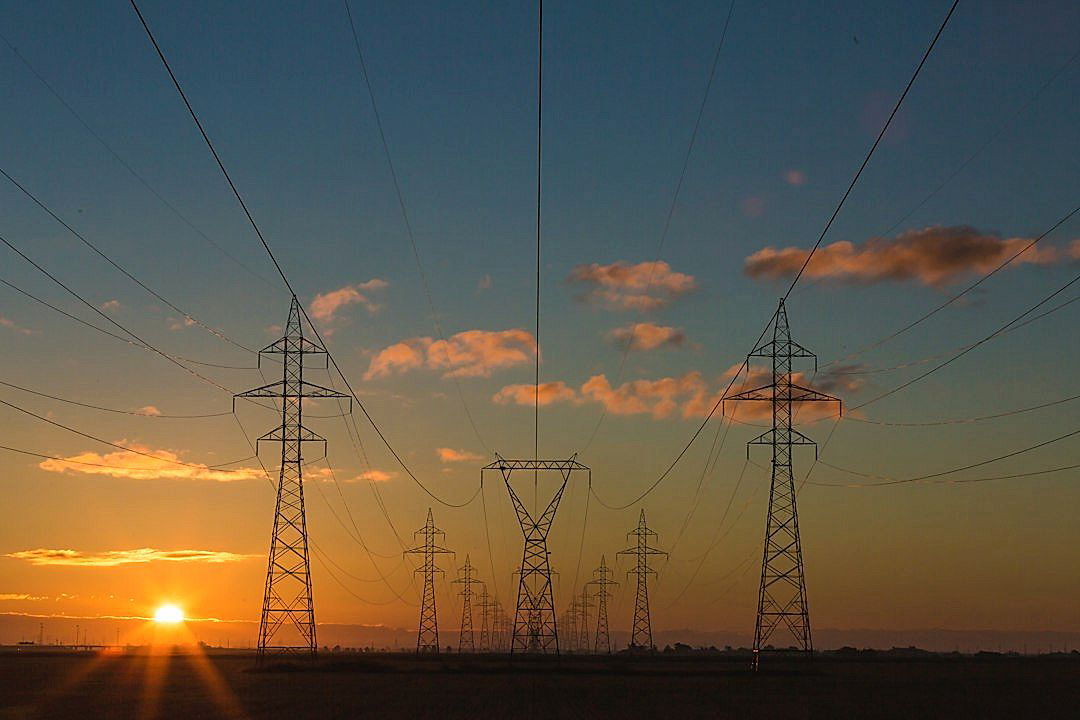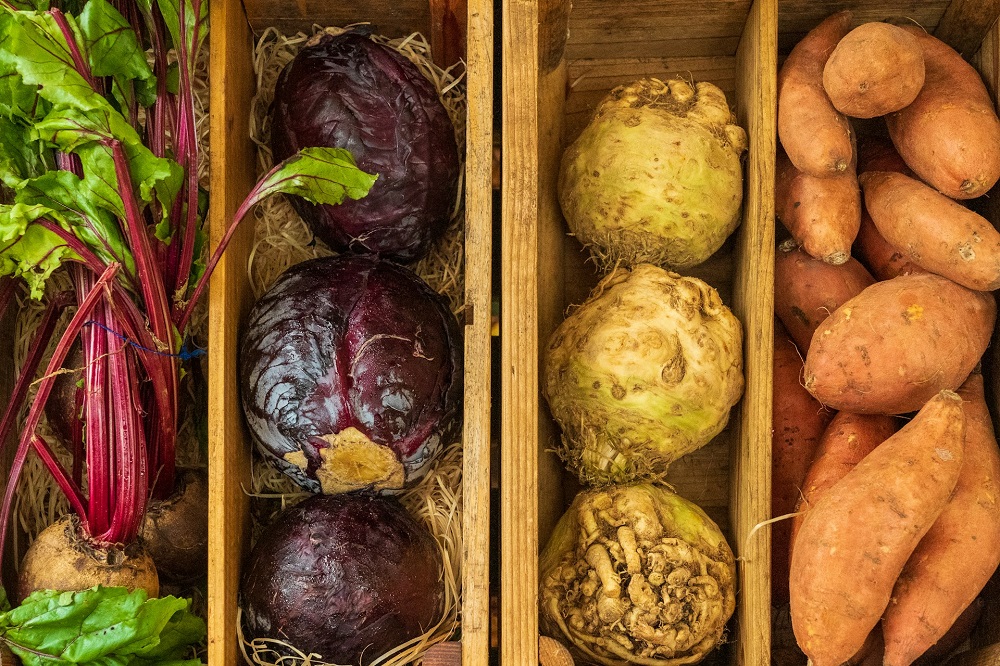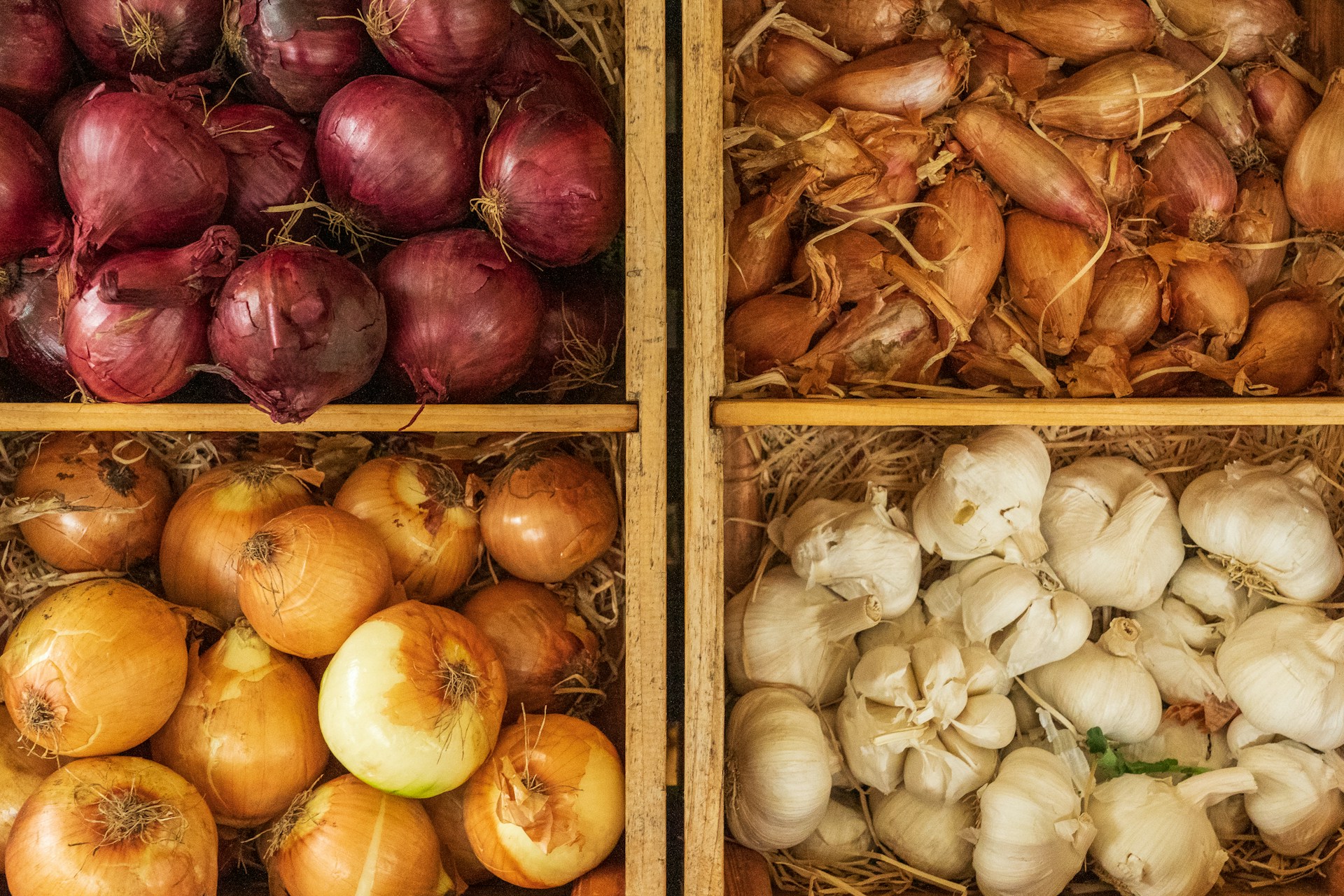The world of produce distribution faces many challenges, with energy conservation being at the forefront.
As we continue to grapple with mounting environmental concerns, every industry must play its part in contributing solutions.
Energy efficiency is no longer just a philosophical concept but a strategic necessity.
In the context of produce distribution, this involves identifying strategies that not only cut costs but also reduce the sector’s environmental footprint.
This discussion will delve into some of these strategies, highlighting their benefits and how they can be implemented effectively.
With high stakes for the planet and their profit margins, distributors need practical, impactful ways to save energy.
Contents
- Energy Saving Strategies For Produce Distribution
- 1. Optimize routes for fuel-efficient produce transportation.
- 2. Implement energy-efficient cooling systems.
- 3. Utilize Renewable Energy Sources for Operations
- 4. Reduce packaging to minimize transportation weight.
- 5. Recycle and reuse shipping crates and materials.
- 6. Maintain Vehicles for Optimal Fuel Efficiency
- 7. Use Energy-Saving Lighting in Storage Facilities
- The Bottom Line
Energy Saving Strategies For Produce Distribution
1. Optimize routes for fuel-efficient produce transportation.
The transportation of produce is a significant component of its total environmental footprint.
Therefore, optimizing routes for transportation can significantly reduce emissions and save energy, simultaneously reducing costs for distributors.
It is important to consider every aspect of the journey from the farm to the consumer to ensure the most efficient route.
Utilizing advanced route planning software can make a substantial difference in creating the most efficient routes.
By running simulations and scenarios, this software can take into account factors like traffic patterns, fuel costs, and delivery time windows to determine the optimal route.
Additionally, picking up loads along the route can effectively eliminate empty miles, resulting in not only fuel savings but also increased utilization of assets.
Minimizing stops, avoiding areas with heavy traffic and shorter paths are all essential factors to be considered when planning an optimal route for energy-efficient produce transportation.
It should be a continuous process of evaluating and refining routes, as even small adjustments can lead to significant energy savings and lower emissions.
It is also valuable to consider the potential benefits of different transportation methods such as road, rail, or even air.
While each has its pros and cons, the right choice would depend on factors such as the distance to be covered, the shelf-life of the produce, and the associated costs.
However, regardless of the mode of transportation, the key lies in creating a flexible, data-driven route planning strategy.
This not only helps in optimizing routes but also allows for quick adjustments in case of unforeseen circumstances such as bad weather or vehicle breakdowns.
Furthermore, route optimization also leads to improved customer satisfaction, since it often results in more accurate delivery times and lower shipping costs.
An optimal route is not just about reaching the destination in the shortest time or distance, but also about doing so in the greenest, most efficient way possible.
Finally, route optimization for fuel-efficient produce transportation should be part of a broader strategy to minimize the environmental impact of the entire produce supply chain.
It requires a commitment to continuous improvement and sustainable practices from all stakeholders involved, from the farmers to the retailers, and everyone in between.
2. Implement energy-efficient cooling systems.
Produce distribution involves keeping fresh produce chilled from the field to the consumer’s fridge, which requires a continuous flow of energy for the cooling systems.
This can not only rack up hefty energy bills but also contribute a significant carbon footprint to the environment.
Therefore, one of the key strategies to save energy in produce distribution is to implement energy-efficient cooling systems.
Traditionally, large centralized refrigeration systems were used which typically function by cooling a large volume of air, often including spaces that did not need cooling such as packaging or void spaces.
This method is unable to adjust to variations in demand and can therefore be very energy inefficient.
The introduction of more modern, decentralized refrigeration systems can contribute to significant energy savings due to their ability to more effectively and efficiently cool the required spaces.
These systems can adjust to varying cooling needs through modern innovations such as variable speed drives and automated systems that monitor ambient conditions.
The use of these advanced systems can reduce the energy consumption of the cooling cycle by up to 30%, thus saving significant costs and reducing the carbon footprint.
Another energy-efficient cooling method that can be employed is thermal energy storage.
This involves accumulating energy during off-peak periods, for example, when electricity costs are lower or from renewable energy sources, then using it to cool the produce when needed.
Not only does this reduce overall energy usage, it also provides a more flexible source of energy that can be used during periods of high demand.
Moreover, the implementation of proper insulating materials and techniques in the design of the cooling systems can considerably reduce heat gain, leading to significant energy savings.
Free-cooling techniques, which use ambient air to provide cooling when the outside temperature is lower than the storage temperature, can also be an important part of an energy-efficient cooling strategy.
These methods come with the added benefit of reducing the use of harmful refrigerants, which can be a large contributor to environmental degradation.
So, with the advancements in technology, it is more feasible than ever to implement energy-efficient cooling systems in produce distribution, ultimately leading to significant cost savings and a more sustainable operation.
3. Utilize Renewable Energy Sources for Operations
Within the produce distribution industry, energy usage is a significant consideration.
Transportation and storage operations, for example, require an immense amount of energy.
Normally, this energy is derived from finite sources such as fossil fuels, contributing massively to carbon emissions and global warming.
However, alternative solutions can be applied, with a growing focus on renewable energy sources.
Embracing renewable energy sources can dramatically cut operational costs, reduce carbon footprint, and align the industry with global sustainability goals.
One of these solutions is solar energy.
Solar energy systems, when installed in distribution centers and warehouses, can generate electricity for lighting, cooling systems, and machinery operations.
The surplus energy can be stored or alternatively, fed back into the grid, reducing energy costs even further.
Another renewable energy option is to use wind power.
Large distribution centers, especially those located in areas with constant wind, can harness this energy source to power their operations.
Moreover, the produce distribution industry may explore the possibility of using bioenergy.
Waste from produce can be converted into biogas for heating or can be used to make biofuels for transportation.
Using these renewable energy solutions, the industry can find a harmonious balance between its energy requirements and its responsibility to environmental sustainability.
While the initial investment in renewable energy systems can be high, the long-term savings on energy costs and the positive environmental impact are enticing benefits.
Thus, the use of renewable energy sources is not just an option but a necessity for the future of sustainable produce distribution.
4. Reduce packaging to minimize transportation weight.
The effectiveness of cutting back on packaging as an energy-saving strategy for produce distribution cannot be overstated. Reducing packaging leads to a significant decrease in the overall weight of the transported items, thereby lowering the energy required to move them from one place to another.
Modify packaging methodology to incorporate more lightweight materials and designs. Forward-thinking companies are considering the use of biodegradable alternatives for packaging, which are not only lighter but also more environment-friendly.
In addition to being more energy-efficient, these alternatives also reduce the company’s carbon footprint, helping protect the environment in the process.
Minimized packaging maximizes fuel economy and optimizes the transportation of produce, resulting in significant energy savings.
Yet, reducing packaging doesn’t mean compromising the safety and freshness of the produce. It is crucial to strike a balance between protection and sustainability.
Technology can aid the design of packing materials and methods that are lightweight, compact, and protective.
This cutting-edge technology creates new opportunities to preserve product quality while minimizing energy use.
Changes in packaging strategies, however, must be communicated effectively to all stakeholders.
Customers, suppliers, and transport providers need to understand the benefits of reduced packaging to support and facilitate the transformation.
The costs related to making changes in packaging methods should be considered as an investment towards energy efficiency.
The reduction in fuel consumption for transportation will result in considerable savings in the long term.
Energy-efficient packaging material is not only beneficial to the environment, but also to the company’s public image.
This illustrates that the business is committed to ecologically sustainable practices, which in turn will boost its public appeal and reputation.
Concisely, reducing packaging to minimize transportation weight is an effective energy-saving strategy for produce distribution, and with thoughtful planning, it can be implemented without any negative impact on the quality of the produce.
The benefits not only include lower costs and energy savings, but also an enhanced brand image and improved environmental footprint.
5. Recycle and reuse shipping crates and materials.
Recycling and reusing shipping crates and other packaging materials is a crucial strategy in energy-saving for produce distribution.
Not only does this approach conserve resources, but it also reduces waste generated by the distribution process.
When old crates and materials are recycled, the need for producing new ones is reduced, resulting in significant energy savings.
Utilizing the same packaging repeatedly can offer a reduction in the overall carbon footprint of the business, promoting a more sustainable and energy-efficient operation.
For instance, instead of using disposable plastic crates, a distribution company may opt for reusable containers made of durable materials.
Such containers can be used multiple times before they reach the end of their life, reducing the frequency of crate production and, hence, energy consumption.
Additionally, this practice reduces the quantity of waste going to landfills, further enhancing the overall environmental footprint of the distribution process.
Innovative solutions such as crate rental programs can be employed to promote the use of reusable packaging materials.
These programs allow for the continuous circulation of crates within the distribution network, reducing the need for new crates.
Moreover, these programs ensure all crates reach the end of their life are recycled properly, closing the loop in material use.
In addition, packaging materials can be made from recycled materials if reusable alternatives are not feasible.
Materials such as recycled cardboard or biodegradable plastics can significantly reduce the energy required for packaging production.
Finally, it’s crucial to work closely with suppliers and partners to encourage the recycling and reusing ethos.
Partnerships can ensure that packaging materials are returned to suppliers, or at least properly disposed of, to ensure maximum utilization.
By adopting these recycling and reusing strategies, produce distribution businesses can realize significant energy savings, contributing to overall sustainability and efficiency goals.
6. Maintain Vehicles for Optimal Fuel Efficiency
Produce distribution businesses should invest time and resources into maintaining their vehicles for optimal fuel efficiency.
This is not only an energy-saving strategy, but it also contributes to the overall profitability and success of the business.
Regular vehicle maintenance can significantly reduce fuel consumption and therefore reduce energy use and exhaust emissions.
A well-tuned engine can improve fuel efficiency by up to 4%, according to the U.S. Department of Energy.
The condition of the vehicle’s tires also has a direct impact on fuel efficiency.
Keeping tires properly inflated can improve gas mileage by up to 3%.
Reducing the load on the vehicle is another effective way to enhance fuel efficiency.
Unnecessary weight in the vehicle requires more energy to move, thus increasing fuel consumption.
Apart from regular maintenance, upgrading to vehicles designed for fuel economy is also beneficial.
Modern trucks and vans offer sophisticated technology to maximize fuel efficiency, like automatic transmissions and aerodynamic designs.
Technology can also help in the form of fleet management software.
Such software offers real-time tracking of fuel consumption for each vehicle, helping identify areas for improvement.
Having a clear strategy for vehicle maintenance and continuously monitoring fuel efficiency is vital for an energy-saving produce distribution business.
The environmental benefits of maintaining vehicles for optimal fuel efficiency extend beyond lower energy usage.
Reducing fuel consumption also means fewer greenhouse gases are released into the atmosphere.
Thus, this strategy not only saves energy and money but also contributes to a healthier environment.
7. Use Energy-Saving Lighting in Storage Facilities
The use of energy-saving lighting in storage facilities plays a pivotal role in implementing energy saving strategies for produce distribution.
It is not just about saving costs on energy bills but also about significantly reducing the environmental impact that can arise from excessive energy consumption.
A myriad of advanced, energy-efficient lighting options are available today that can reduce energy use by up to 50% or more, compared to traditional incandescent or fluorescent lighting systems.
The most common forms of energy-efficient lighting include LED (Light Emitting Diodes), Compact Fluorescent Lamps (CFLs), and Halogen Incandescent – all of which consume less energy and have a longer lifespan.
Of these, LEDs prove to be a revolution as they use about 75% less energy and last 25 times longer than incandescent lighting.
The use of energy management systems to control lighting according to the need, via sensors, timers or controls, can further optimize energy use in storage facilities.
It is also worthwhile to employ daylight harvesting or the use of natural light during daytime to reduce dependency on artificial lighting.
In addition to energy savings, improved lighting design also creates a better working environment leading to increased productivity and less human errors.
For instance, a well-lit facility improves visibility and worker safety, reduces the chances of accidents, and hence can lower insurance expenses in the long run.
Much like other energy efficiency projects, switching to energy-efficient lighting comes with an initial expense, but the long-term savings can significantly outweigh these costs.
Energy rebates and financial incentives are often available to businesses installing energy-efficient measures, which can reduce the payback period substantially.
Moreover, energy-efficient lighting also contributes to corporate social responsibility initiatives as businesses can showcase their commitment towards sustainability and environmental conservation.
On a final note, the implementation of energy-saving lighting should be a part of a comprehensive energy management strategy to maximize the potential benefits.
Using a combination of technologies and practices, such as intelligent lighting controls, can amplify the benefits of switching to energy-saving lighting.
This includes practices like zoning (grouping of lights), scheduling (setting on and off times), occupancy sensing (lights turn on when space is being used), and daylight harvesting.
Therefore, the pursuit of energy-saving lighting in storage facilities is a crucial component of energy-saving strategies for produce distribution.
The Bottom Line
Adopting sustainability practices in the transportation of produce presents numerous benefits for both the environment and businesses alike.
Prioritizing fuel-efficient routes, the use of renewable energy sources, and reducing packaging can significantly mitigate the environmental impact, while also enhancing overall operational efficiency and cost-effectiveness.
Similarly, energy-efficient cooling systems and lighting, as well as robust recycling and maintenance programs, can lead to remarkable energy savings.
It is clear that such practices not only support the urgent call to preserve our planet, but they also align profitably with sound business operations.
Embracing these initiatives will undoubtedly contribute to a more sustainable future in the produce transportation industry.




